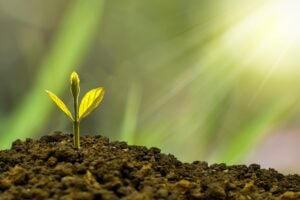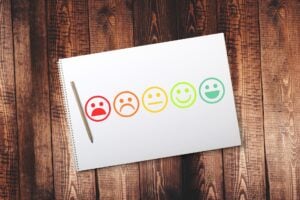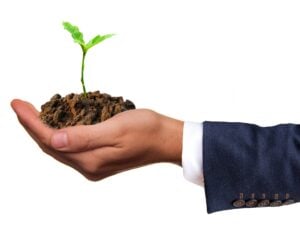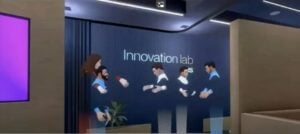This integration should be done for many degree programs, Gentles asserts, including the most popular ones, similarly to how math, natural sciences, communication and programming have been made essential to their curriculums. Far more students need to be better equipped with the skills, knowledge and experiences essential for building a more just and sustainable world.
Here, we present Gentles’ TEDx Talks presentation on sustainable development, given at MIT:
“As I take you along this journey that involves my personal story, I want you to see the transformative power of education and the urgent need for two words! And it’s not artificial intelligence. It’s sustainable development.
Setting the Stage
But before we dive in, let me ask you: What comes to mind when you think of Jamaica? Maybe vibrant culture, stunning beaches, Usain Bolt, reggae music – one love. And maybe some other things that you wouldn’t say to my face openly. But how often do we think of Jamaica as a place filled with some of the most resilient people. And yes, I am Jamaican – Wagwan! Many Jamaicans like myself who want to achieve their ambitions not only have to overcome cycles of poverty, and crime, and systemic barriers to opportunities, but also the limiting beliefs of what people with backgrounds like mine should be doing with themselves.
Let me tell you, eight of us who went to my high school in Jamaica are now here at MIT as undergrads, pushing against those limiting beliefs. And this is a reminder of the importance of breaking down barriers and creating pathways to success for all regardless of where you are coming from. My story is just one example of the resilience and determination that lies within these communities.
The Journey Begins
Growing up in Jamaica, I had a wonderful life that was far from easy. My mother is from a rural area and my dad is from the ghetto. They got married around my age and a few months after I was born, they separated. My mom took me to live with her mom somewhere else in the capital, Kingston. And as long as I can remember, just making ends meet has been a struggle for my family, and we didn’t even have many middle-class privileges. One simple example, my mom has never owned a car – and you also heard there are complications with her coming to my graduation – but to go to and from work, she takes mini-buses.
But I still had a wonderful childhood. I was surrounded by the vibrance, friendliness and strength of the Jamaican people, and could enjoy some of the most beautiful environments on the island. I had a strong sense of community and family. I felt very loved. And one of the things that made my childhood special, is that I always had hope.
Hope Being Threatened
I am starting to understand now how powerful having hope is, and that our hope is being threatened. So many people from marginalized communities, like my home, are under the threat of having the little they have to live and smile be taken away from them by what so many people like me love to pursue, but struggle to do it responsibly. And that is innovation. One perspective that we don’t highlight enough in STEM education, is that our creations just often benefit ultimately the few most privileged in society at the cost of continuing the cycle of poorer nations being exploited for their abundant, “cheap” resources, to fuel our innovations and leaving the most vulnerable communities to deal with many of the worst consequences, like this climate crisis.
Examples of Injustices
For example, aluminum. We use this metal in almost everything. From utensils, to phones, to robots. Most of it comes from a rock called bauxite. Around the 1950s, international companies from North America came to Jamaica to set up the first bauxite mining operations on the island. My country is now among the top 10 bauxite producing nations. We export bauxite primarily in the form called alumina, which is a pre-cursor to aluminum. A lot of my relatives are still in the countryside where my mom grew up and nearby you can find these: red mud lakes generated from discharge from processing bauxite. You’re telling me, that in this technological age, this is the best we can do with industrial discharge? We all want the aluminum for our different uses, right? But how many of us are supporting innovation to reduce the need of operations like these to force people to leave their homes, and deplete plus contaminate their rivers and groundwater? And these large-scale unfair treatments happen all over the world.
Another example. The Democratic Republic of Congo produces 60 to 70% of cobalt, a mineral essential to rechargeable batteries. They are the number one exporters of cobalt. I am talking about around 100,000 metric tons per year. And you’re telling me that around 75% of Congolese people lived on less than U.S. $2 a day last year. Almost ¼ of cobalt produced comes from artisanal miners, and these workers are barely paid anything.
And these examples are just the beginning of the supply chain story. So when you factor in these injustices, tell me, how much does it really cost us to have the innovations that excite?
AI & Hope
One of my biggest concerns is that so many young people capable of addressing these injustices are just being funneled into improving technologies like artificial intelligence while humanity is waiting for breakthroughs for urgent causes. Please, don’t get me wrong – artificial intelligence is useful. It’s helping people and companies in mind-blowing ways. It definitely promises a lot of wealth, progress and efficiency. But for who? For which nations? For which communities?
Well, we at least need to be more proactive in helping working-class families deal with, for instance, the economic disruptions that will come from AI replacing their jobs. Because when our innovations make marginalized people’s environments far less livable and take away their jobs, we make them feel forced to move and in desperation go to places where they know they aren’t even welcomed.
Their hope is being threatened, and with climate change and environmental degradation going through the roof, the well-being of all socio-economic classes is being threatened in the long run. But thankfully there is hope – a hope that many of us, including myself, find worth fighting for.
A Dream Realized
On March 14, 2020, around the beginning of the COVID-19 pandemic, I had a moment that changed the course of my life forever – that was the day I saw my admission to MIT. Now I am a senior studying environmental engineering, about to graduate next month. And one way that I can summarize my MIT journey, is that I evolved. I became determined to come here for way more than a degree. I came here to make a difference, even before I graduate. My desire to give people hope by being a doctor, evolved into not just being an environmental engineer, but being a force, that could fight against the root causes of oppression.
The Missing Piece
To delve deeper into the underlying causes of injustices related to climate change, irreversible degradation and massive pollution, I had to look in- and outside the classroom, here and other countries. I didn’t grow up as someone who was particularly interested in environmental, economic, and social justice. I was the kid who just wanted to do math problems and science homework. But after allowing myself to explore and wrestle with the invaluable perspectives from my sustainability-related classes, projects, research and conferences like COP28, I had a change in mindset. In the heights of our pursuits of globalization, progress and profit, I am convinced that this world needs sustainable development more than ever. If we keep teaching students like me to innovate without wrestling with the real challenge of what our neighbors and our planet have to endure to fuel our creativity, then we are holding ourselves from even closing the gap between innovation and sustainability much faster. And in case you didn’t know, we are already off track on meeting our 2030 development goals. And we can do something about this.
A Call to Action
One place of really high leverage in accelerating sustainable development lies in education. I’m particularly keen on undergraduate education – and I mean the core of it. The required classes, syllabuses, degree tracks and the most heavily weighted assignments – they have high leverage. We can use the core curriculums of multiple majors, including the most popular ones, to clearly and intentionally equip the next generation of future leaders and innovators with the knowledge, skills and experiences needed to build a more just and sustainable world. By integrating sustainable development into the core of multiple curriculums, as we have done with math, natural sciences, programming, and communication, we can have more hope that future generations will be better equipped and more eager to really address real world problems.
Institutions at the forefront of innovation, like MIT, have a crucial role to play in this endeavor. They need to set the trend for sustainable development.
Core curriculums at these institutions could better involve classes that help us students zoom out from our microscales, lines of code and control volumes to see the bigger picture of how innovation really comes to being in this globalized world: like the social, economic and environmental dimensions of our pursuits, and the consequences that are often out-of-sight so out-of-mind. We can be better challenged to use our creative geniuses to address the broader and long-term impacts of our innovations.
As I mentioned earlier, there are classes at MIT that are already doing a phenomenal job in promoting sustainable development. But they need more support. They need more spotlight. They need to be better integrated into the core of multiple curriculums. I have them to thank as well for my change in mindset.
It’s time for more students to be leaving our institutions with not just creative minds and hands, but with the mindset of responsibility towards our planet and those most vulnerable to the consequences of our pursuits.
And it’s not enough to just learn about these problems and how to address them—we must act. We must demand more from our institutions and ourselves to push for a just and sustainable future.
Conclusion
And remember, this call is not about saving the planet. This is about putting back at the forefront of innovation what really matters to humanity. So let’s not just build a brighter future for the most powerful, or the privileged, or my family, or Jamaicans, or people who look like me, but for all, regardless of where you are coming from. One love. Thank you.”
Editor’s Note: Runako Gentles is an international student from Jamaica studying environmental engineering at MIT. He is working towards helping the Caribbean adapt to climate change and develop sustainably. He wants to combine his love for public speaking, music and entrepreneurship to move the needle in achieving a more sustainable and equitable world. In the upcoming fall, he will be going to Stanford University to pursue a Master of Science in Environmental Engineering.
The Next Generations of Innovation
All Things Innovation recently looked at “Shaping the Next Generation of Innovation,” with a focus on Gen Z. This generation is in a unique position as they are often viewed as one of the first to be shaped and influenced by technology such as the Internet, social media and smartphones. This generation, often labeled digital natives, has embraced change, adopted and interacted with tech from an early age.
Gen Z comprises people born between roughly 1996 and 2010. This generation’s identity has been shaped by the digital age, climate anxiety, a shifting financial landscape, the war on terror and COVID-19, among other things. Yet, despite that, Gen Z is super comfortable with tech, giving them a unique impact on shaping technology trends, the future of work and play and the challenge of societal norms. In other words, Gen Z may be perfectly suited for innovation.
Attend FEI 2024
Looking forward to FEI 2024? The conference, which will be held June 10 to 12, will feature the session, “Gen Z Focus: Attaining Next Generation Intelligence.” While not a traditional focus group, this live session launches with Gen Z creators sharing their thoughts on corporate innovation, what they see currently working and what is currently turning them off. Speakers include Cherie Leonard, Head North America Insights, Colgate-Palmolive, NA; Michael Nevski, Director, Global Insights, Visa; Samantha Johnson, Founder & CEO, Tatum Robotics; Oksana Sobol, Senior Director, Insights Lead, The Clorox Company; Bodhi Patil, Ocean-Climate Solutionist; and Kyne, TikTok Math Queen. Register for FEI 2024 here.
Video courtesy of TEDx Talks
Contributor
-

Matthew Kramer is the Digital Editor for All Things Insights & All Things Innovation. He has over 20 years of experience working in publishing and media companies, on a variety of business-to-business publications, websites and trade shows.
View all posts
























































































